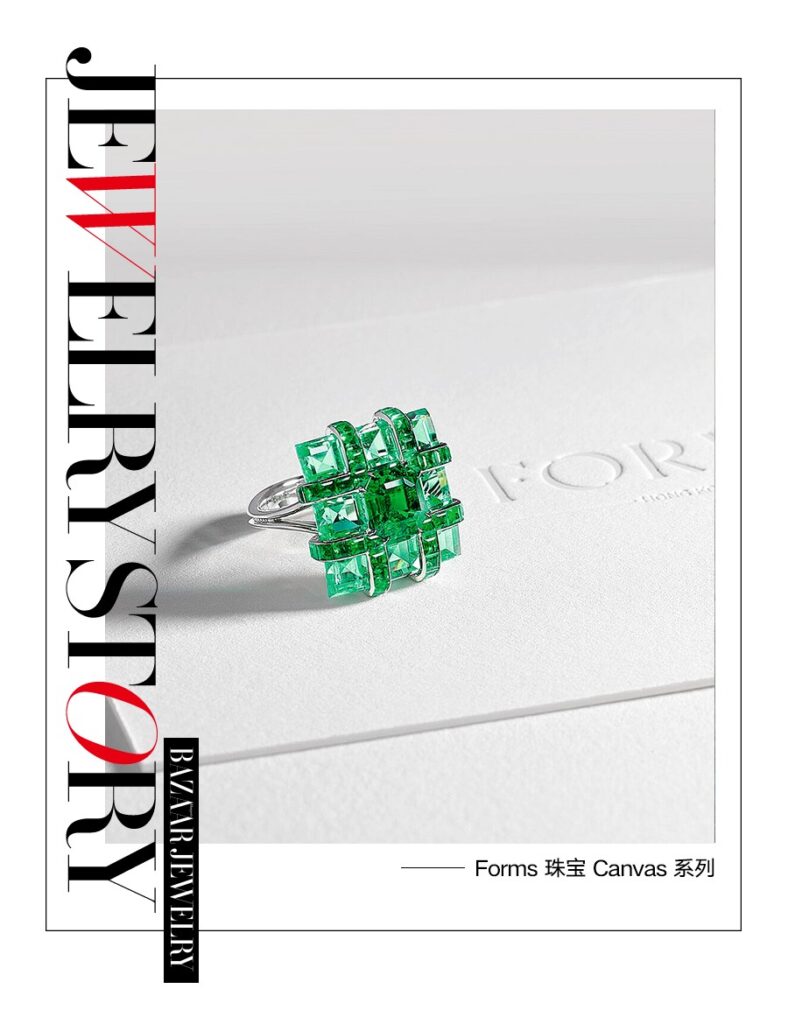
Choosing jewelry requires taste, but buying it demands intelligence. Look around at the savvy women in our midst, and you’ll notice that in today’s world of material abundance, what we need is not more, but better.
Gemstones with true potential, valuable craftsmanship, high-level artistry, and more ethical and eco-friendly jewelry consumption have become key words in everyone’s ideal shopping list for the new year. This isn’t just an update in consumer attitudes; it’s an upgrade in values across all dimensions.
To grasp the secret of buying both valuable and refined pieces, we’re bringing you an upgraded approach to jewelry purchasing, helping you buy at a high standard and wear with high taste!
The change in consumer attitudes is closely linked to the rapidly evolving market, especially as “Generation Z” and “Millennials” gradually become the main consumer force. Many popular consumer categories have already shown entirely new business patterns. Under the influence of various factors, is jewelry – a category with a long history, inherent value, symbolizing beauty, and closely related to art – also undergoing changes?
In October 2022, at Sotheby’s Hong Kong auction, the 11.15-carat “Williamson Pink Star” was hammered down for HK$453.2 million, setting a new world auction record for the price per carat for any diamond or gemstone, and becoming the second most expensive jewel or gem ever sold at auction at that time.

In June 2023, at Sotheby’s New York auction, the 55.22-carat unheated Mozambique ruby “Estrela De Fura” became a new miracle in auction history with a selling price of $34,804,500.
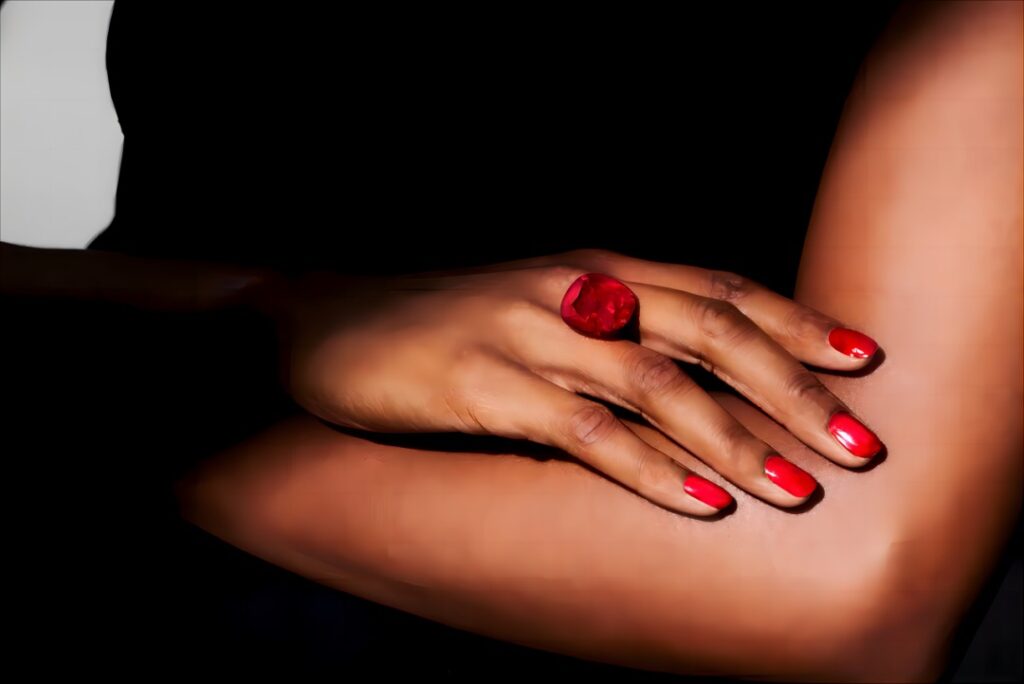
In May 2024, at Phillips Geneva auction, the 280.84-carat Colombian emerald “The Amazon Queen” was sold for $3,068,819. In the same auction, the 1.56-carat “Argyle Phoenix” red diamond, known as the largest round brilliant cut red diamond, was sold for $4,203,152.
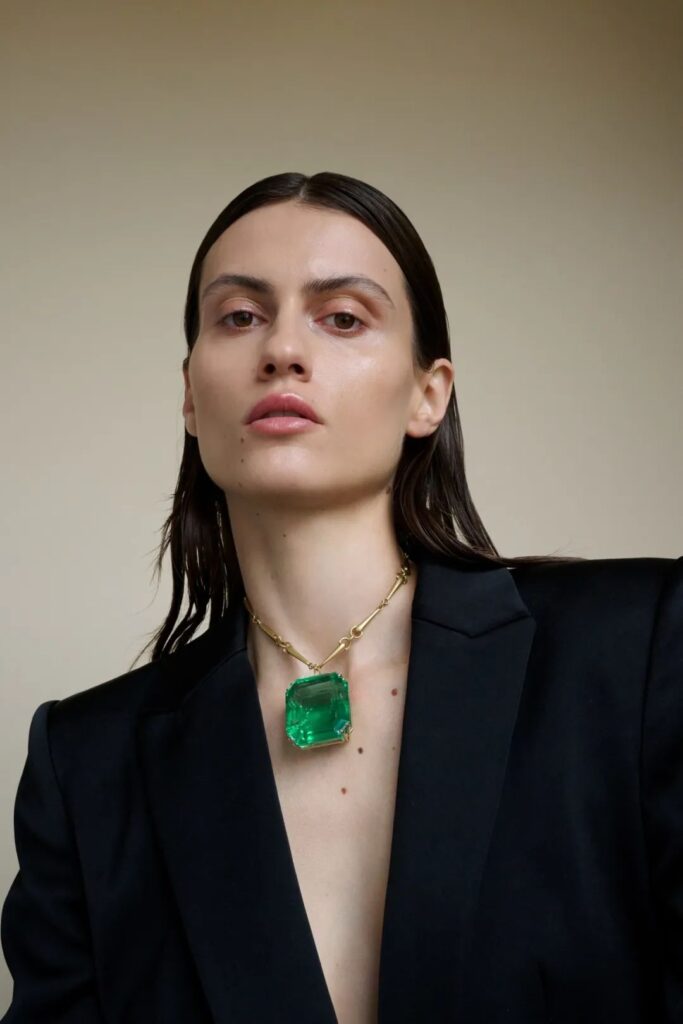
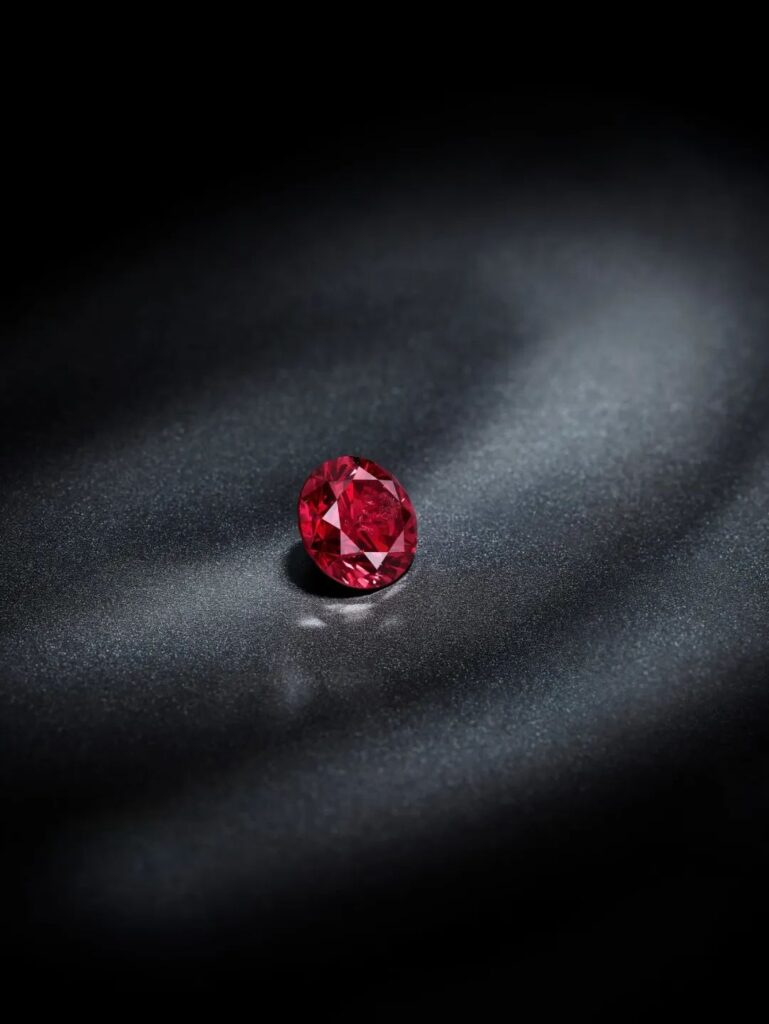
Outside the auction houses, let’s compare the financial report of Richemont Group, which owns numerous watch and jewelry brands. The report for the fourth quarter and full year ending March 31, 2024, shows that the group’s full-year sales increased by 3% year-on-year, reaching a record 20.6 billion euros (approximately 162.054 billion RMB).
The jewelry division, including Cartier, Van Cleef & Arpels, and Buccellati, saw a 6% increase in annual sales to 14.242 billion euros. This also shows that jewelry consumers’ demand for quality has never decreased, only increased.

The value of jewelry is important, but our values are more important; personal preferences matter, but so does a smart buying approach. This is an era of diversified consumption. Jewelry no longer just satisfies your need for decorative, high-quality, and high-value items. Open your mind and boldly embrace new consumer concepts – high aesthetics, high taste, and high cultivation are waiting for you to unlock!
Whether you’re a beginner jewelry enthusiast or an experienced collector, an ideal jewelry list always includes pieces with natural diamonds and colored gemstones as the main stones. The reason lies not only in their dazzling high appearance value but also in the high value these small “stones” possess as nature’s concentrated essence.
Who wouldn’t hope that the gemstone occupying the center of the jewelry has more “appreciation” potential? If you think so too, then you must learn to pick out the true “potential stocks”!
Taking High-Quality Diamonds to the Next Level: True Rarity Lies in “Genetics”
Diamonds have always been a mature market category in the jewelry world, with transparent pricing and high demand. Even those who don’t frequently buy jewelry have likely encountered them when choosing wedding rings.
For personal wear, diamonds with medium color grades like F or G and clarity grades of VS or SI (where inclusions are not visible to the naked eye) can suffice. However, for truly investment-grade, high-quality diamonds, one must select the cream of the crop.
Many believe that D color and IF clarity represent the pinnacle of diamonds. In reality, within this grade, Type IIa diamonds are even more rare. These diamonds, completely free of nitrogen elements, naturally possess impeccable color and clarity. They constitute only 2% of all natural diamonds, making encounters with Type IIa diamonds quite rare. If your budget allows, don’t miss the opportunity to acquire one.
Bigger Isn’t Always Better: Choose Wearable Gems Over Size
In recent years, besides the ever-popular ruby, sapphire, and emerald categories, previously niche gems like Paraiba tourmaline and red spinels have gained popularity, with prices soaring. As a result, many have shifted their investment strategy towards high-value gemstone varieties that are currently more affordable, betting on their appreciation potential.
Some are drawn to larger stones due to their lower per-carat price, while others worry about whether their chosen gemstone will become trendy. In reality, minimizing risk is simple: First, consider the wearability of the jewelry – don’t solely pursue larger sizes. Second, opt for high quality in terms of color, clarity, and cut. Adhering to these two principles ensures you can’t go wrong.

2024 Blue Book High Jewelry Collection
Tiffany Céleste – Ray of Light Diamond Ring
Recognizing Rarity and Beauty: A Win-Win Purchase
In the jewelry world, some gemstones may not be trendy but hold high value. This phenomenon is easily explained – they possess beauty but are produced in low quantities. Cobalt blue spinel and tsavorite garnet (which can be more brilliant than diamonds) are prime examples.
The strategy of identifying low-production, high-beauty stones as potential investments isn’t unfounded. It has been validated by many “star” gemstones, such as the exceptionally high-quality Burmese rubies, Kashmir sapphires, and Muzo emeralds from legendary sources.
These gems maintain consistently high market positions and are hard to acquire regardless of size. While we may not outcompete seasoned collectors in classic gemstone categories, focusing on rarity and beauty ensures that any gemstone purchase is a profitable one.
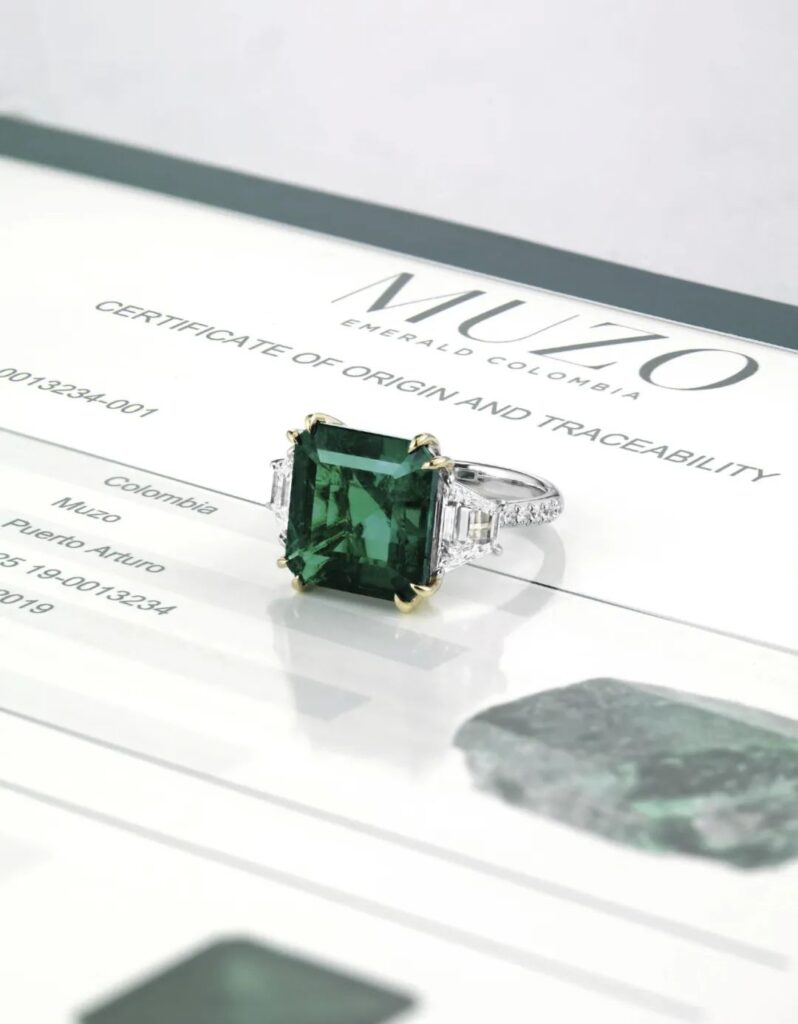
Christie’s Hong Kong Auction, November 2021
Many believe that exquisite craftsmanship in jewelry-making only enhances beauty and refinement without increasing the overall value of the piece. To dispel this misconception, it’s time to explore the truly valuable artisanal techniques involved in the process – from gemstone cutting to setting and manufacturing!
The Devil is in the Details: Exquisite Setting Techniques Add Value
Since Van Cleef & Arpels introduced their Mystery Setting technique, jewelry created using this method has inherently commanded high value and remains highly sought after at auctions. Similarly, innovative setting techniques continue to emerge, but not all enjoy the same “luck” as the Mystery Setting. Most are quickly replicated.
Truly valuable artisanal techniques often remain elusive; even when the production secrets are revealed, they still require exceptional patience and time to execute.
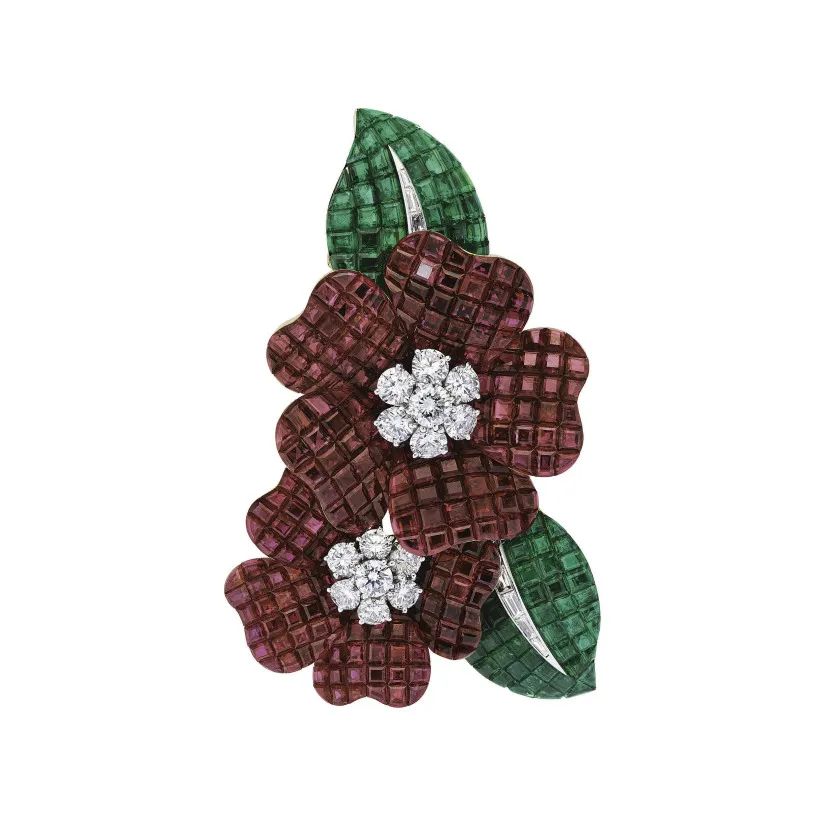
Ruby and Emerald “Mystery Set” Floral Brooch
Christie’s New York Auction, December 2022
Innovative Prong-less Setting
Techniques similar to the Mystery Setting have evolved into various forms. For instance, the “Canvas” series rings by Forms Jewelry demonstrate an exceptionally high level of craftsmanship. Eight light-colored emeralds are connected using an innovative prong-less technique, creating a matrix-like structure that is incredibly clever.

Canvas Series 18K Gold Emerald Ring
Gem-on-Gem Setting
Unlike conventional metal settings, gem-on-gem setting is a signature technique of Swiss jeweler Boghossian. While this method originated in ancient Egypt, it was previously limited to more pliable materials like wood, mother-of-pearl, or gold.
Today, the art of carving and seamlessly setting one gemstone into another is highly innovative. When two gems are layered, it not only elevates the craftsmanship but also doubles the brilliance.
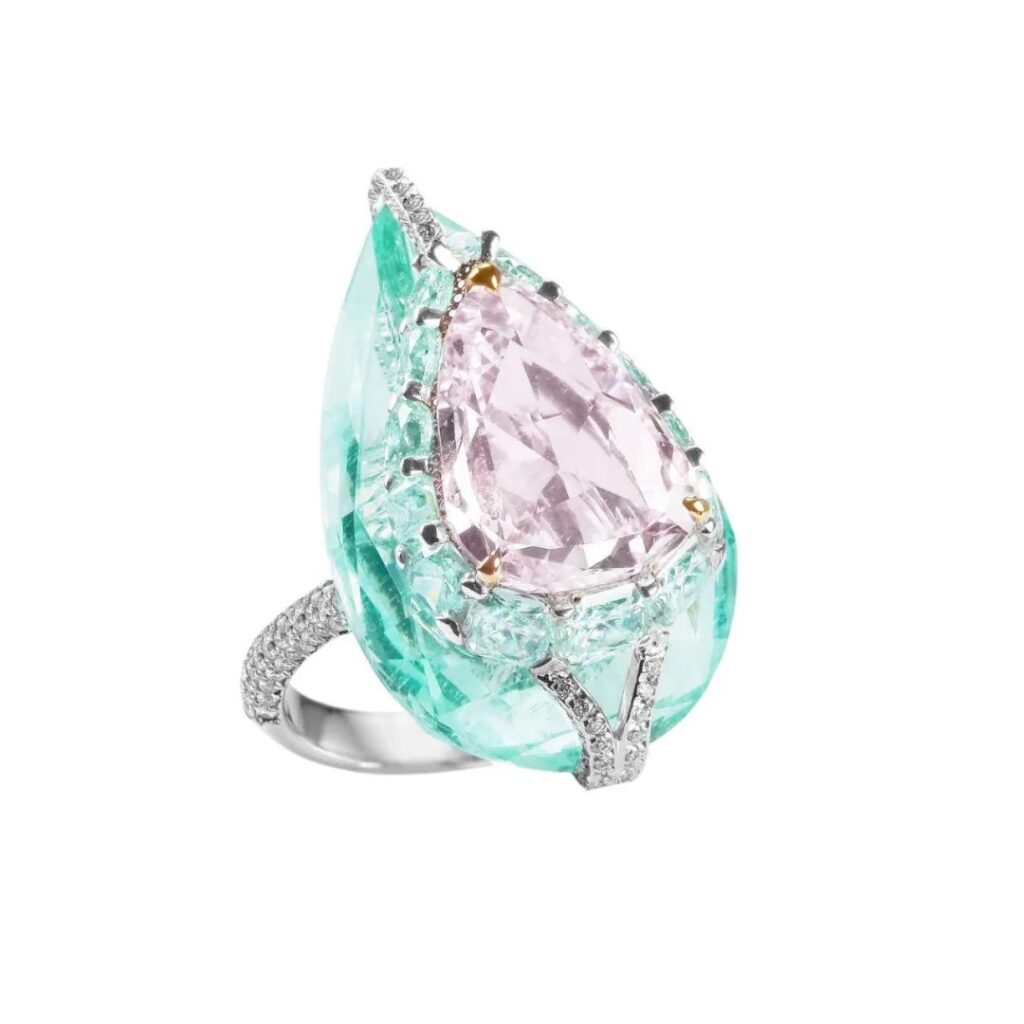
Kissing Series Ring
Jewelry and art have always been closely intertwined. Many consider collecting antique jewelry as a progression in taste and the beginning of truly understanding and appreciating the artistic value of jewelry. Indeed, when you delve into jewelry history, you’ll discover that each era has its unique artistic style, with some styles remaining at the forefront of trends despite the passage of time.
Moreover, many antique jewelry pieces have very strict requirements for gemstones and craftsmanship. Therefore, the probability of encountering precious gemstones in antique jewelry is actually quite high, making it a highly cost-effective choice for many jewelry enthusiasts.
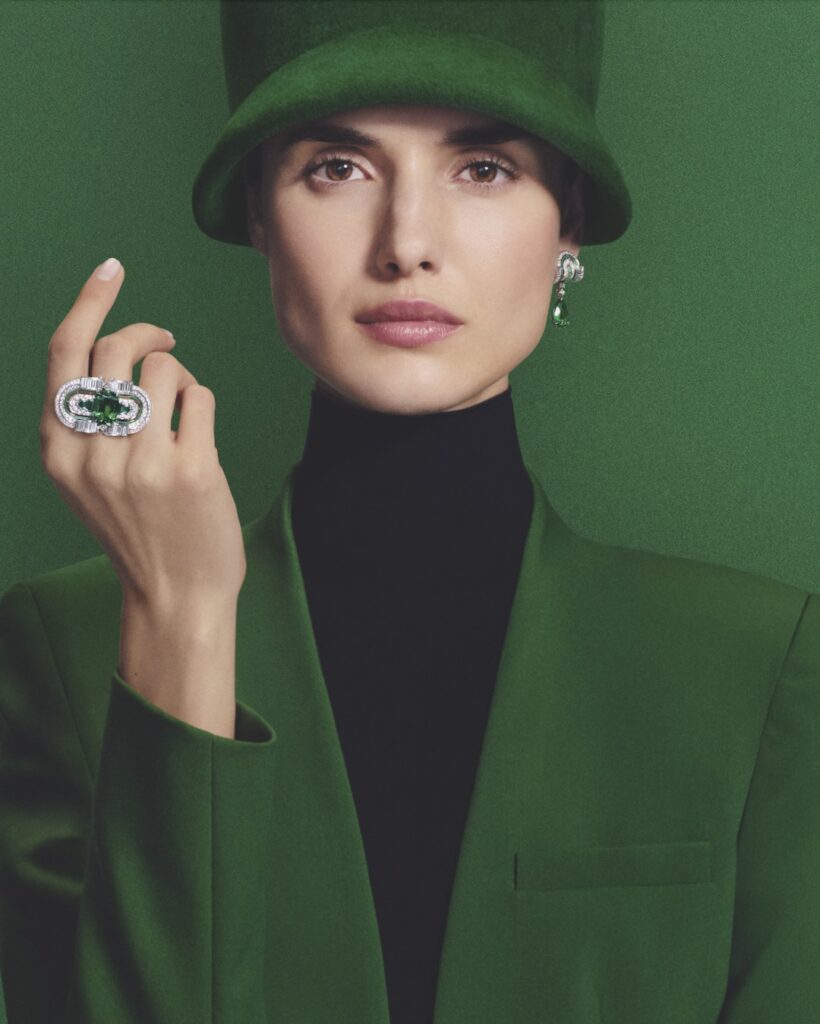
Histoire de Style, Like a Queen
High Jewelry Collection
Green Garden Ring and Pendant Earrings
Art Deco Style: Universally Loved
Modern, elegant, and characterized by geometric lines, Art Deco style pieces have always been popular in the market, representing a timeless artistic style.
On one hand, it’s very wearable, serving as the perfect accent to your overall look whether for daily wear or formal occasions. On the other hand, with an increasing number of people falling in love with the Art Deco style, its appreciation potential is greater, provided quality is assured.
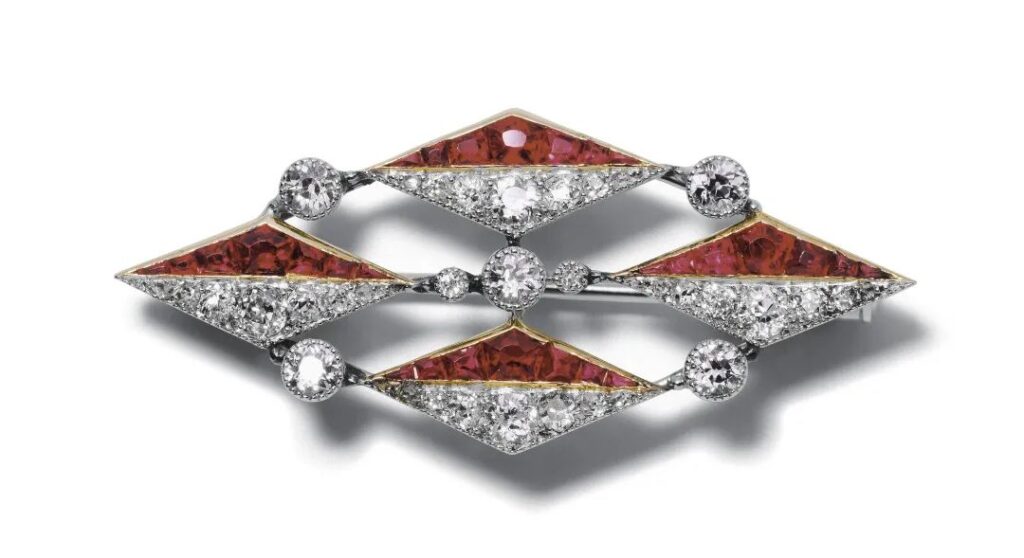
Not Just Art, but “New Art”
Can jewelry without precious gemstones fetch sky-high prices at auction? Indeed, this headline-making event has occurred more than once with Art Nouveau period jewelry! During that era, artists like René Lalique boldly broke away from established jewelry-making rules, amplifying the “art” aspect by creating unique pieces with natural forms, mysterious themes, and rich materials.
Since this period lasted only 20 years, the remaining works are extremely precious, representing rare artistic treasures in the jewelry world.

Cattleya Hair Comb
Sotheby’s Paris Auction, December 2021
After exploring so much knowledge about jewelry selection, haven’t you found your perspective on jewelry becoming clearer? Believe that you’ll become more “informed” when making future purchases. If you have any more questions about jewelry, feel free to leave a message for the editor anytime~
The Smart Buyer’s Guide to Jewelry: Are You Savvy Enough?
Tweet





